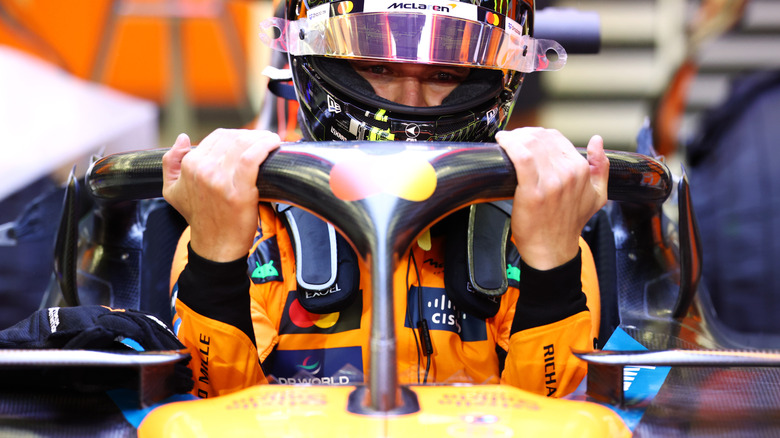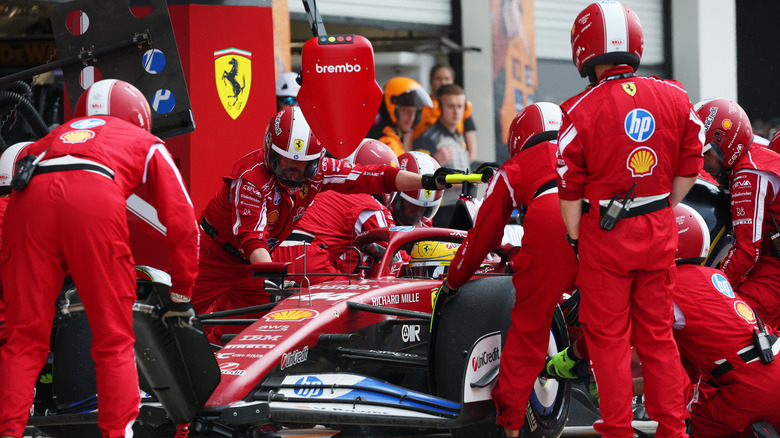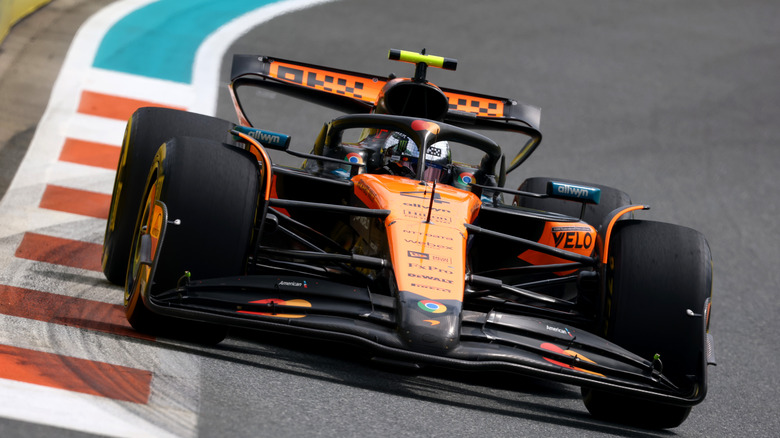Why Do F1 Cars Have Jagged Windshields? Here's What They're For
There's no denying that Formula One cars are among some of the most sophisticated vehicles on earth. Something about these fast machines speaks to every human being, even new fans still learning the basics of Formula 1 Racing. There are now many more ways to experience this exhilarating world, from televised or in-person racing on Sundays to YouTube highlights and the Netflix series "Drive to Survive." As a result, there has been a steady increase in the number of people who appreciate the on-track competition as well as the advanced engineering of the cars.
Modern F1 cars go well over 200 miles per hour, thanks to their aerodynamic design and 1,000-horsepower turbo-hybrid V6 engines. One small part that helps drivers and cars go that fast is the barely-noticeable windscreen mounted between the protective halo and steering wheel. The jagged edges of the small plastic windshield help disrupt airflow before it reaches the driver's pod. This reduces wind buffeting in the cockpit and helps channel air to the rear wing. The aerodynamic effects of this small part can be significant and translate to better cornering and higher top speeds, but how exactly is this achieved?
Downforce and drag are critical
Formula 1 racing has changed a lot since the first race over 70 years ago, with manufacturers and the rule book evolving to improve vehicle performance and driver safety. One thing has remained consistent, though — the importance of downforce and drag in the design of Formula 1 cars. Downforce enables an F1 car to corner at high speeds by harnessing the wind as it moves past the car. The body shape and various fins and wings combine to apply the equivalent of up to five times a car's weight as it travels around the track. This is especially important on a track's corners, where downforce means more grip and faster speeds.
On the other hand, drag — the force of the wind that opposes a moving object — becomes more important on straightaways. While F1 manufacturers work to maximize downforce to improve grip, they also aim to minimize drag. Drag increases as an F1 car speeds up, making the engine work harder at high speeds. Various parts of an F1 car work together to reduce drag, including the endplates and wheel arches, the front and rear wings, and — you guessed it — the jagged windshield.
Jagged windshields reduce driver fatigue
The jagged windshield on an F1 car helps reduce drag by breaking the air into smaller vortices, which have less effect on the vehicle as it gains speed. This innovative feature is also a significant aid to drivers. Larger air currents can whip the driver's head around, which is potentially dangerous in a fast-paced sport where every bit of focus and alertness counts. By breaking the 220-mph winds into smaller streams, F1 windshields reduce strain on the driver's upper head and neck.
They also deflect some of the air upward and away from the driver's body entirely, further reducing fatigue. Some F1 races are won and lost by margins of thousandths of a second, and a miniscule difference in airflow or one split-second reaction can mean the difference between a race win and a finish out of the points. As such, every piece of an F1 car is tailored to provide the least amount of drag possible while contributing to the car's ability to grip the surface. A little comfort for the driver is the cherry on top.


